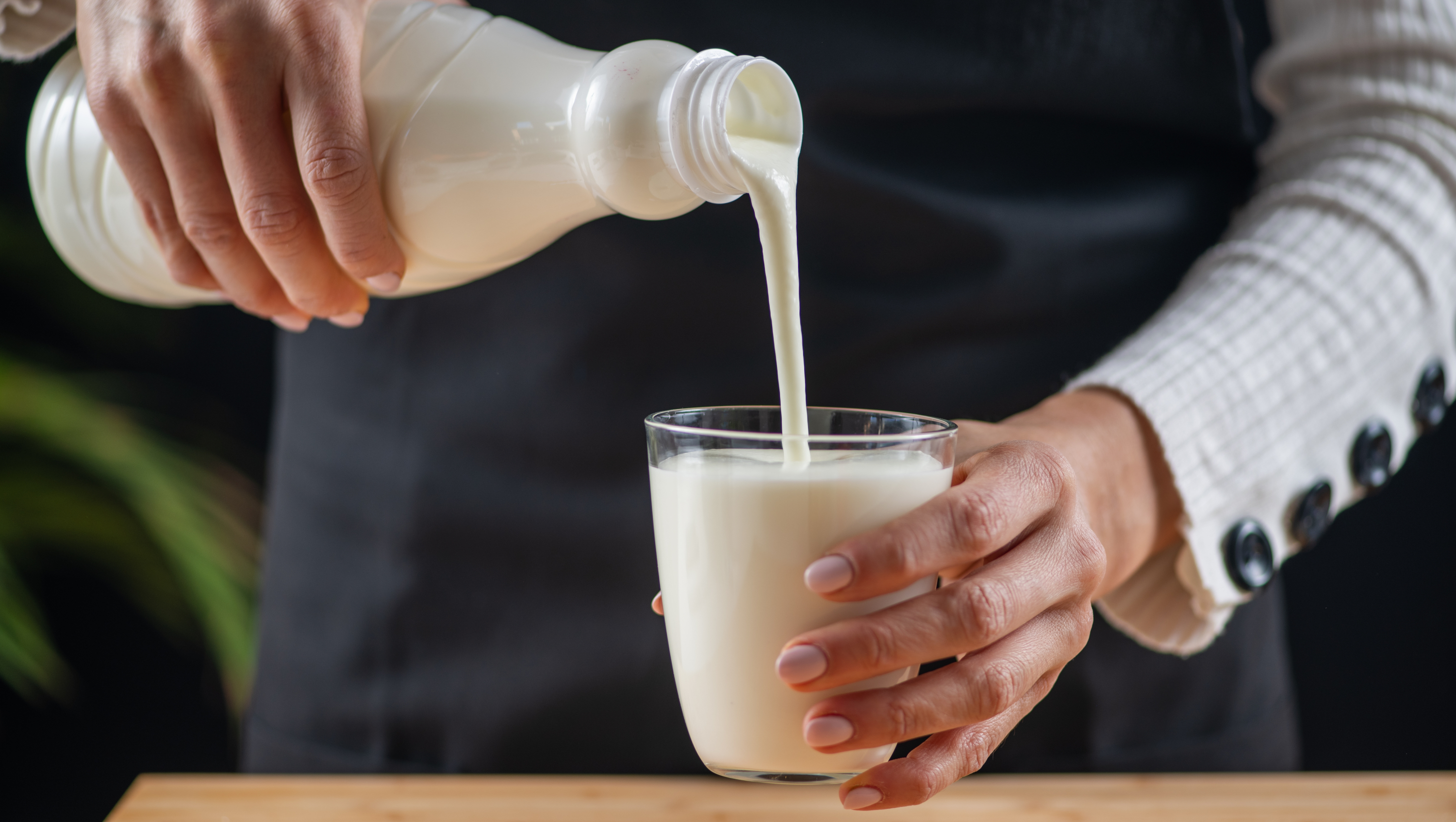What are mattress coils and why are they important?
Coils affect how supportive and responsive your mattress feels. Here's a handy guide to the four main types...
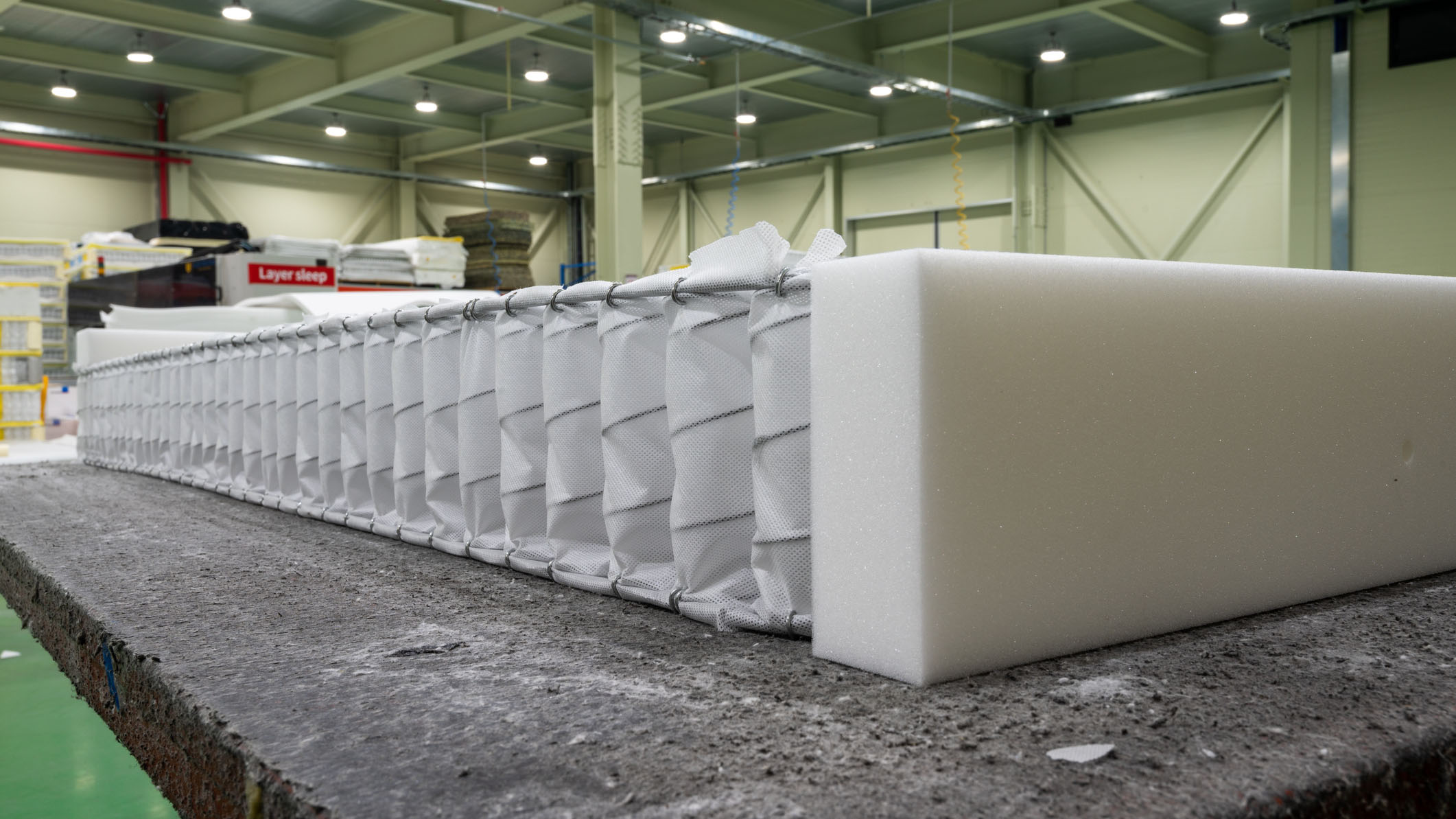
Coils comprise the support core of an innerspring or hybrid mattress, but did you know there multiple types of mattress coils? While all of them are counted upon to provide sufficient support and promote airflow, some types are better at alleviating pressure from sore joints or dampening the movements of a restless sleep partner.
Most of the recommendations in our guide to the best mattress are made with a core of individually wrapped pocket coils, followed by layers of foam. Traditional innerspring mattresses may use Bonnell, offset, or continuous wire coils, but luxury innerspring models tend to favor pocket springs for their responsiveness and versatility.
Read on to learn the differences between the four main types of mattress coil and the role they play in how supportive and responsive your bed feels.
Today's best mattress sales
- Saatva mattresses: Save up to $600
- Avocado organic mattress: Up to $1,100 off
- DreamCloud mattress: Up to 50% off
- Nectar mattresses: Up to 40% off
- Helix mattresses: 25% off + free pillows
- Casper mattress: Up to 30% off
- Emma Sleep: 50% of all mattresses
- Brooklyn Bedding mattresses: 25% off sitewide
- Purple mattress: Save up to $600
What are mattress coils?
Mattress coils (or springs) form the support core of an innerspring or hybrid mattress. They're usually made from tempered steel so they're less likely to lose their shape over time. There are four main types of mattress coils, with each offering different benefits such as motion isolation and pressure relief. The type of coils in a mattress can influence its overall feel and durability.
The four main types of mattress coils
1. Bonnell coils
Bonnell coils are a staple of traditional innerspring mattresses. Also known as hourglass coils for their shape – narrow in the middle and wider at the top and bottom – Bonnell coils are knotted at the end and interconnected by a helical wire, creating one unit that moves together. This design helps with support but it's also inflexible, which can trigger pressure points and transfer motion across the surface.
Budget innerspring mattresses typically feature Bonnell coils as they're relatively cheap to produce. On the other hand, this type of mattress coil can be noisy and prone to premature sagging so they're not ideal for long-term use.
2. Offset coils
Offset coils also have an hourglass shape, but the edges are squared instead of round. This makes them more flexible for pressure relief and better at limiting movement than Bonnell coils while still providing strong support. They're also quieter.
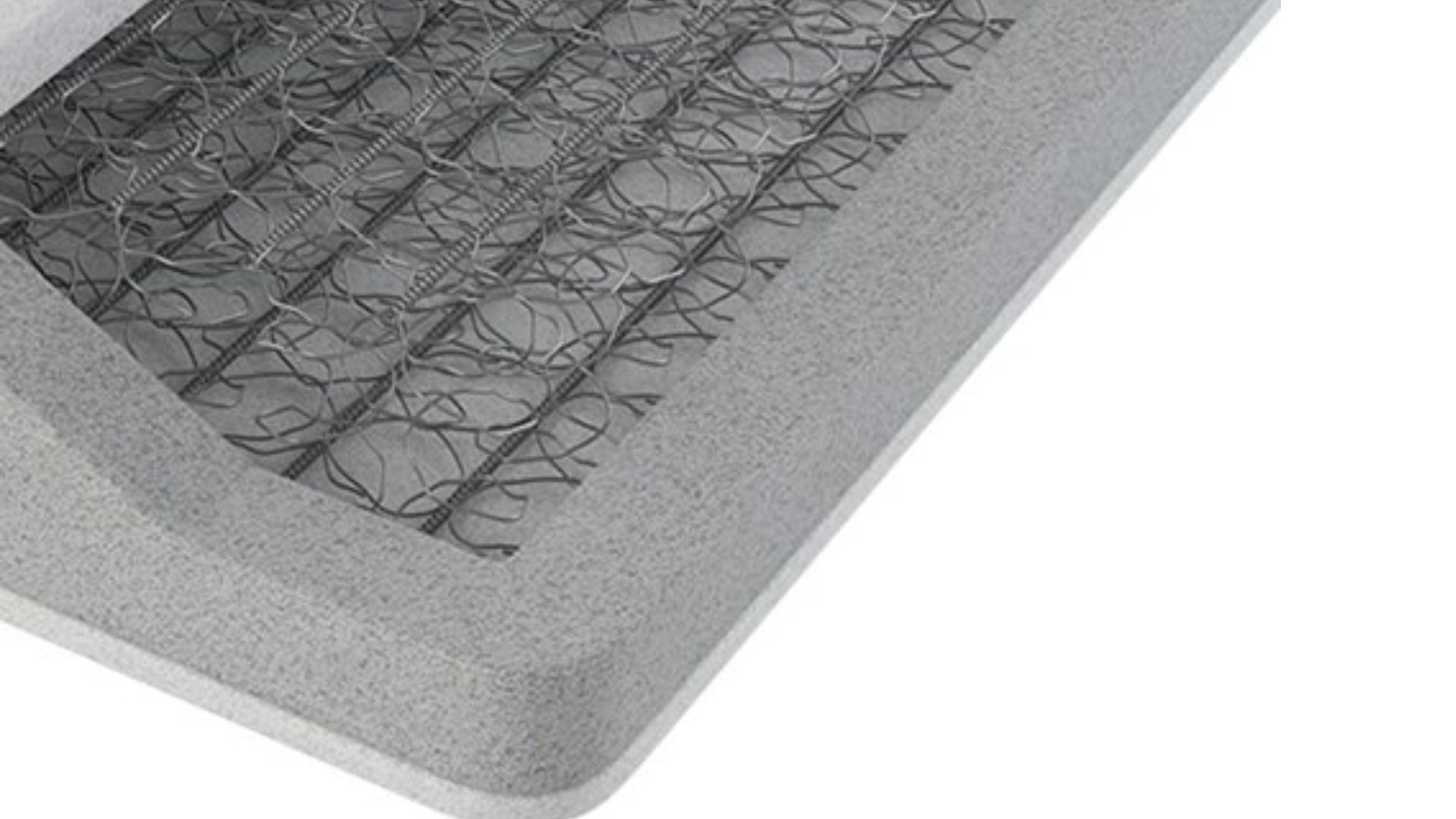
3. Continuous wire coils
Continuous wire coils are made by shaping a single strand of wire into a row of loose coils and then connecting those rows with helical wires. Like Bonnell coils, continuous wire coils are relatively inexpensive to produce and provide stable support, but they offer minimal contouring and don't isolate motion very well.
4. Pocket coils
Pocket coils are cylindrical coils individually wrapped in fabric and then glued or sewn together to form a support layer. This design allows each spring to move independently, providing a balance of support and pressure relief that other coil types can't quite match. Also, because the coils are isolated from one another, movement is less likely to reverberate across the mattress.
The best hybrid mattresses we've tested have pocket coils combined with comfort layers made of materials like memory foam, poly foam, latex, and natural wool. Hybrids are durable and versatile, but the diversity of materials used can make them expensive.
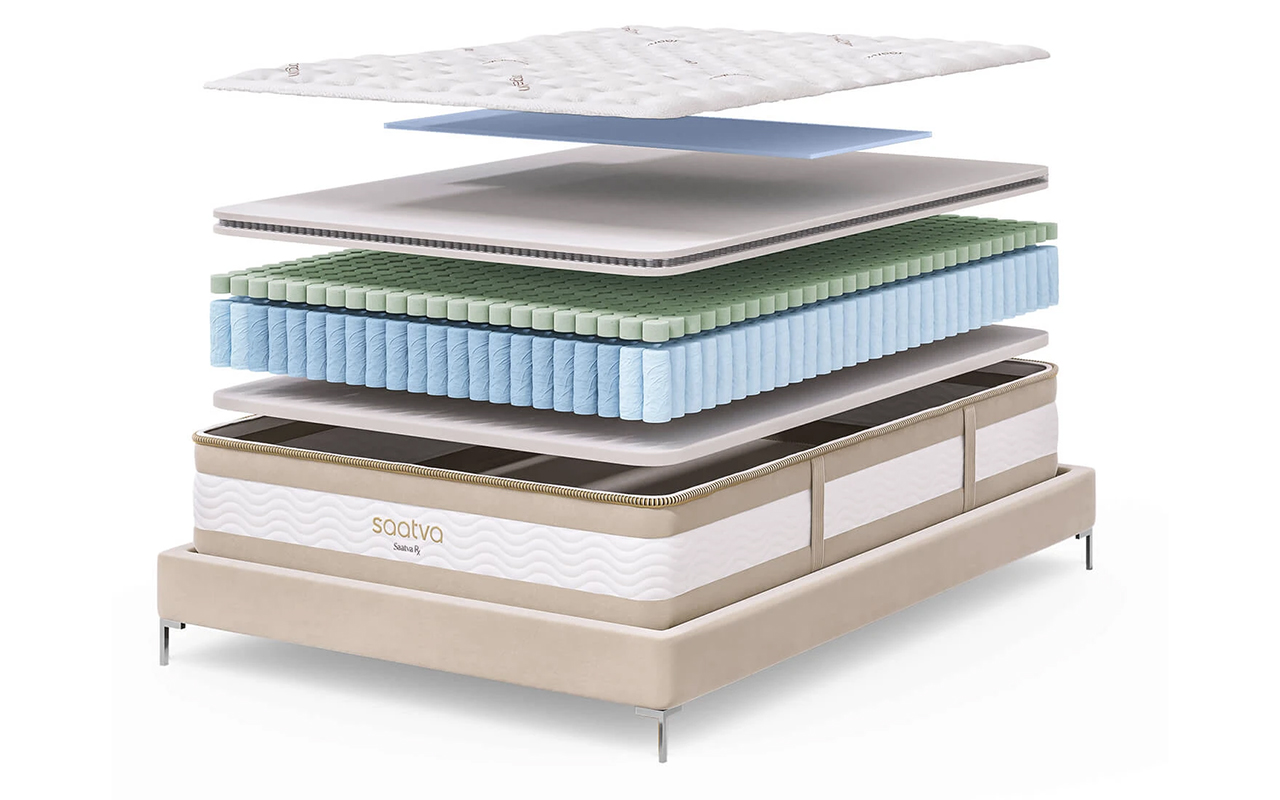
What are microcoils?
Microcoils are shorter and more flexible than standard mattress coils, measuring between 1" and 4" tall. (Standard coils are between 6" and 8" tall.) Either individually wrapped or sandwiched between two pieces of foam, microcoils are found in the comfort layers or as a transitional layer in a mattress. They're used to increase pressure relief, aid airflow, and add mild resistance to a mattress.
Nanocoils may also be used for this purpose. They're much smaller than microcoils at under an inch.
Mattress coils FAQs
What type of mattress has coils?
You'll find coils in traditional innerspring mattresses and hybrid mattresses. Both mattress types use coils as a support base, but they deviate in overall construction.
An innerspring mattress generally uses Bonnell, offset, or continuous coils, which are then covered with a layer of material (either foam, wool, or fiberfill) to create a buffer. Innerspring mattresses used to be flippable so you could sleep on either side, but modern designs adhere to a distinct top-to-bottom design.
A hybrid mattress typically has a core of pocket coils plus multiple comfort layers made of foam (latex, memory, or gel-infused) and/or wool. They may also include microcoils to add pushback and contouring. Many hybrids place stronger gauge coils along the perimeter for strong edges and across the center of the mattress for targeted lumbar support, a feature often seen in the best mattresses for back pain.
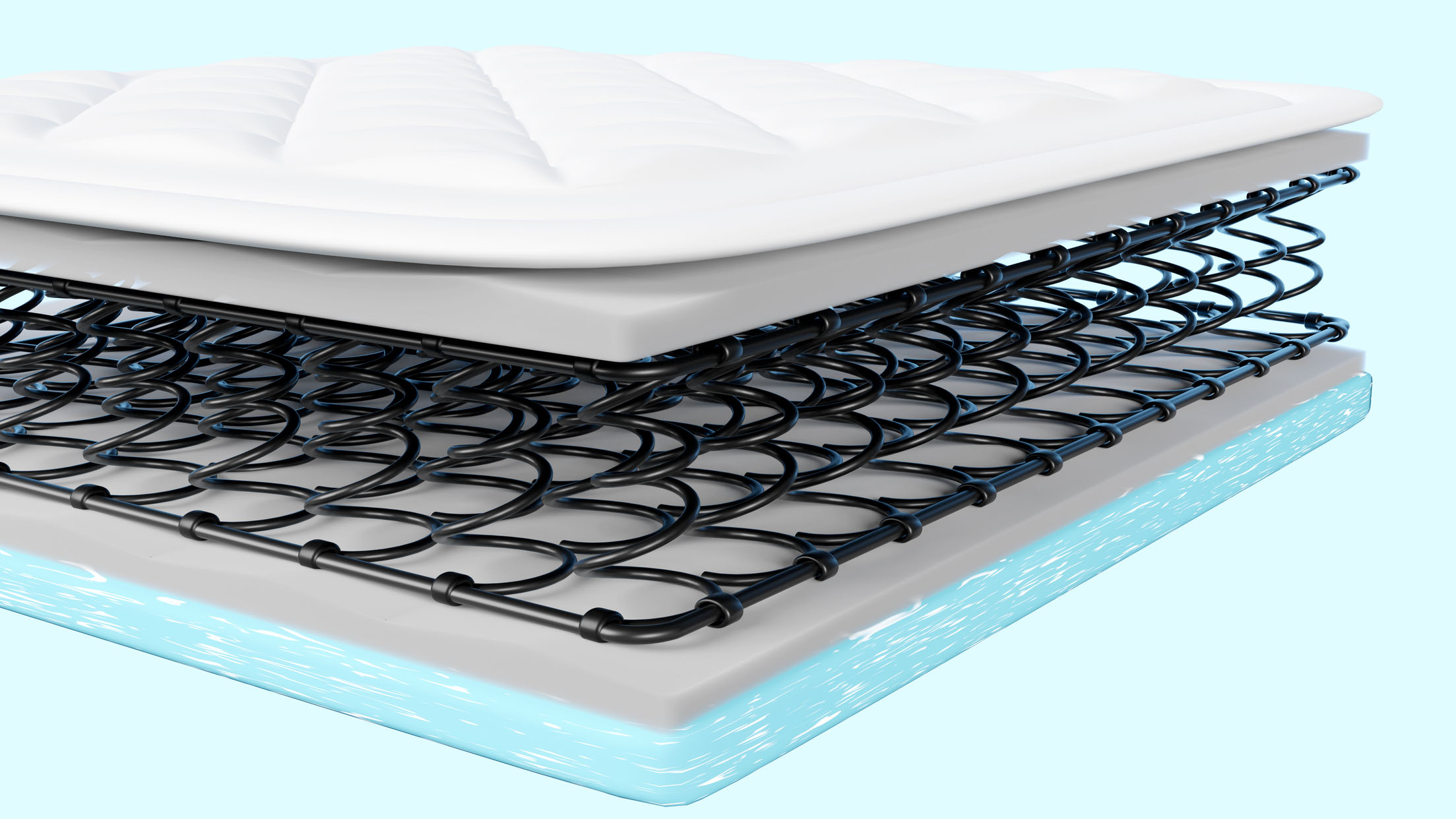
Does mattress coil count matter?
As a general rule of thumb, a standard queen-size innerspring mattress should have at least 400 coils. That minimum coil count increases to 800 for pocket coils, as they're slimmer.
But similar to thread count in bedding, more doesn't always mean better when it comes to coils in a mattress. Pay attention to the coil gauge, which indicates the thickness of the wire. The typical range is between 12 and 17 – the lower the number, the thicker (and firmer) the coil will be.
That's not to say you should avoid thinner, higher gauge coils. They're a better option if you want a softer bed feel with more contouring.
Mattress coils vs memory foam: Which is better?
These days, a mattress doesn't need to have coils. Just take a look at the best memory foam mattresses. Instead of coils, they use a dense block of foam for support. Memory foam is known for its gooey feel, deep pressure relief, and exceptional motion isolation. On the flip side, it tends to trap heat, although advances in sleep tech are working toward making this less of an issue.
Coils make a mattress more supportive and breathable. Traditional innersprings may not have the pressure relief or motion isolation of a memory foam mattress, which is why hybrids with pocket springs are so popular – they combine the best qualities of coils and memory foam.
As for which one is 'better,' that depends on what you need to achieve your best rest. Knowing what questions to ask before buying a new mattress will make the selection process much less stressful.
Sign up to get the BEST of Tom's Guide direct to your inbox.
Get instant access to breaking news, the hottest reviews, great deals and helpful tips.

Based in Philadelphia, USA, freelance writer and editor Alison Barretta has been sharing buying advice and retail news for over 15 years. Since 2020 she's been helping Tom's Guide expand its robust library of sleep content by researching the latest trends, speaking with renowned experts, and going behind the scenes at Saatva, Casper, Sleep Number, Tempur-Pedic, and 3Z Brands. Alison has reviewed everything from budget memory foam mattresses and luxurious innerspring beds to immersive sound pods and $7,000 smart beds that automatically adjust to your every move. When she isn't reviewing mattresses or searching for great deals to save you money, Alison can be found practicing yoga and martial arts, experimenting with recipes, getting too invested in the Philadelphia Flyers, and snoozing with her cat / assistant mattress tester Alex.
